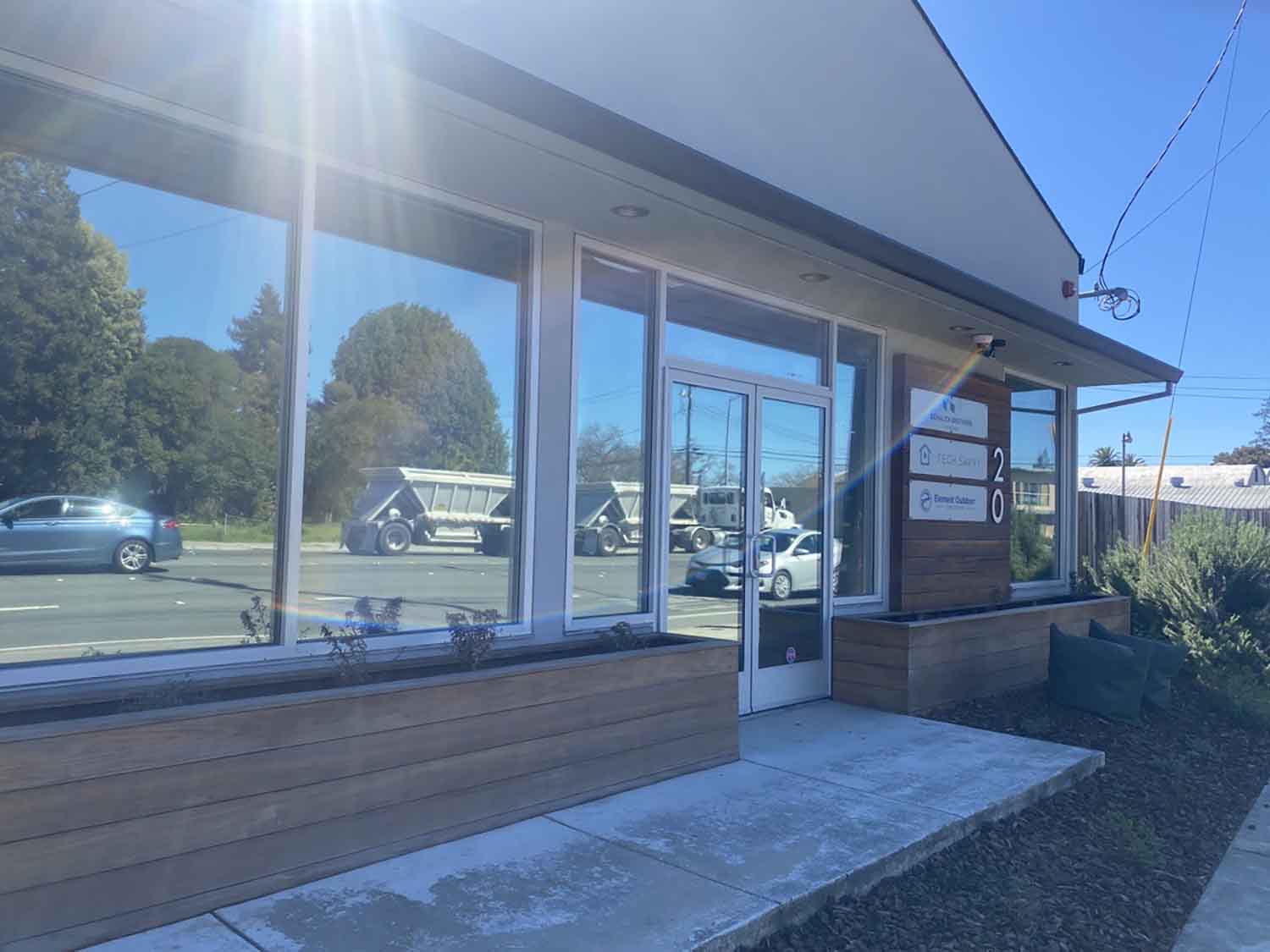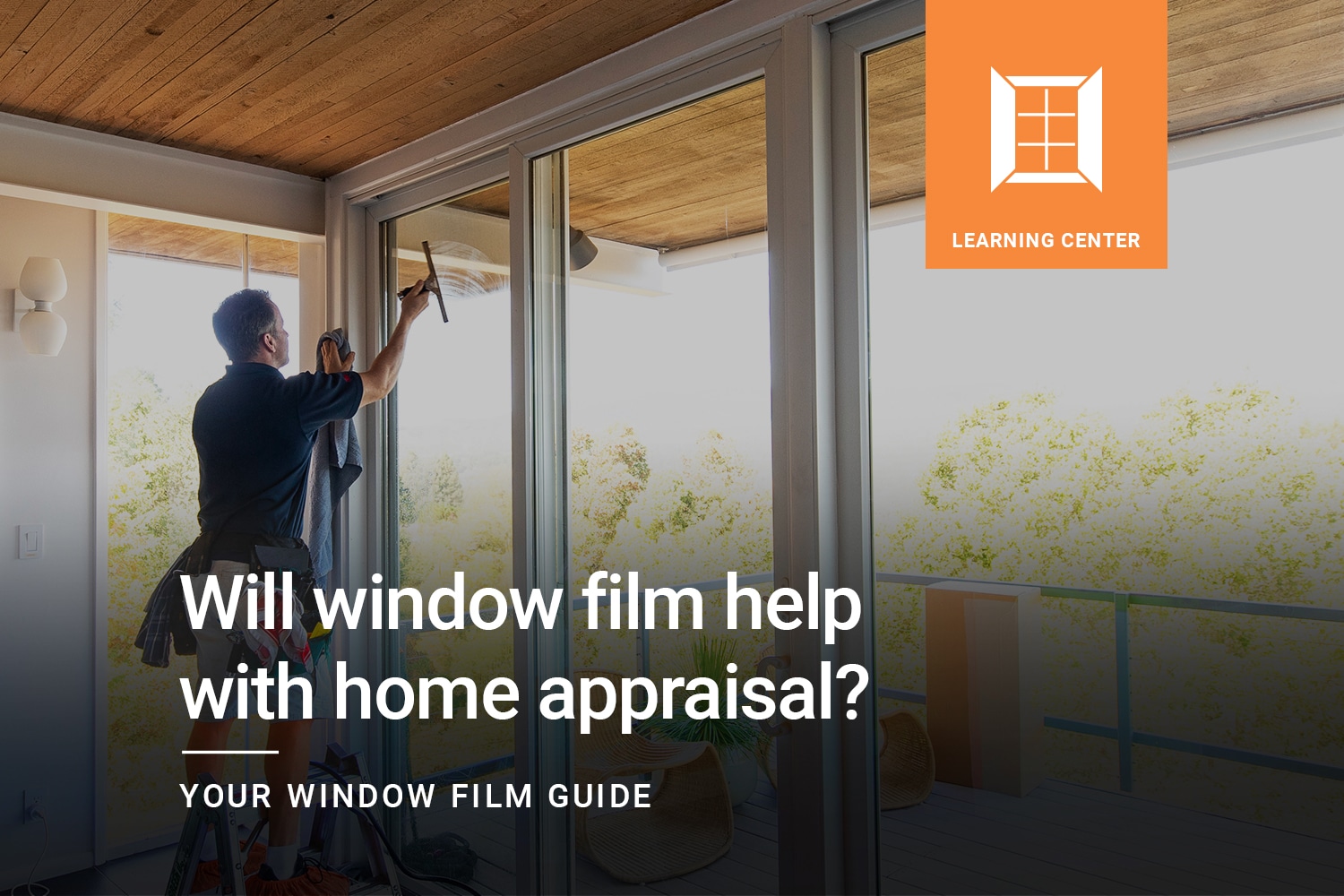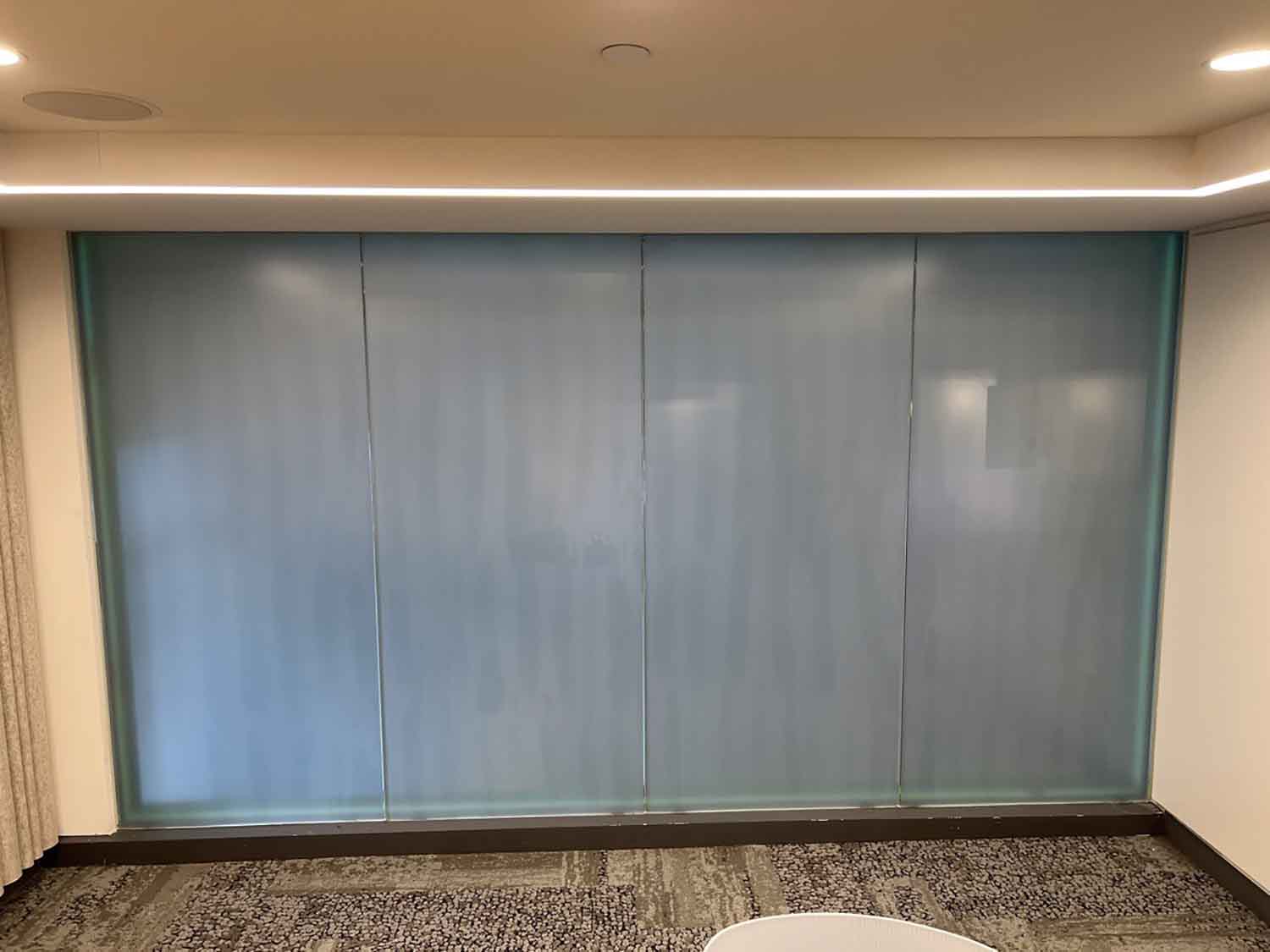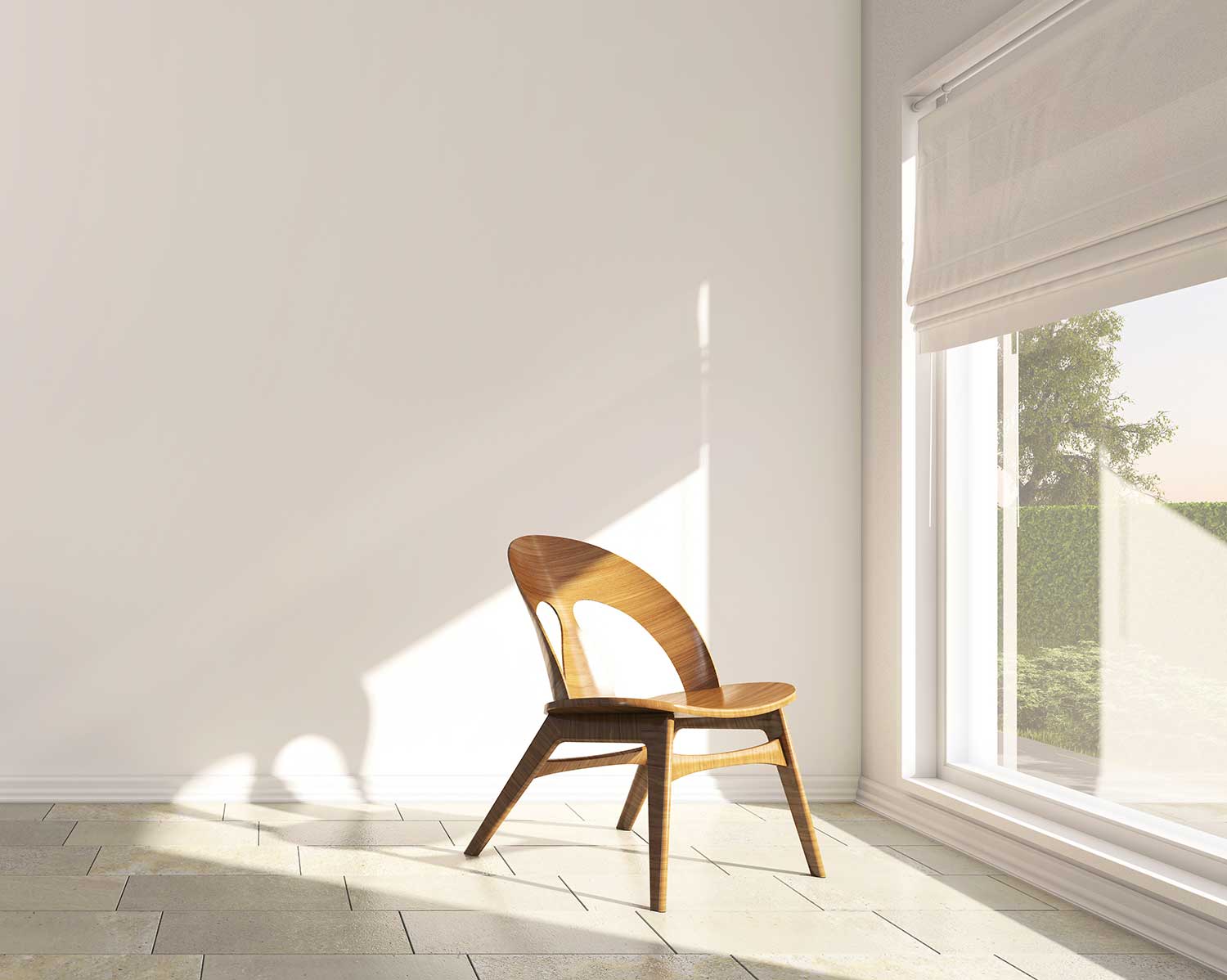
Window film vs window coverings? It’s a question that many of our San Francisco Bay Area customers have faced. In this post, we’ll discuss the pros and cons of each. We will also offer a 3rd option that might solve this dilemma once and for all.
Window Treatments and Coverings Pros and Cons
Window treatments and window coverings are a common option for homeowners and businesses alike. These include blinds, custom drapes, shades and more. What are the advantages of window coverings or treatments? First, there is the issue of privacy. Simply put, window treatments are an excellent option for controllable privacy. With most treatments, you can open them to let the daylight in, then close them when you want privacy. Pretty simple, right?
Another advantage of window treatments is the decorative options. One of our favorite resources is The Shade Store. So. Many. Options! We’ve seen quite a few of these styles while visiting homes all around the San Francisco Bay Area. Shades, blinds, and drapery can add a touch of personality to a room and can really be a thing of beauty. Third, window coverings can reduce heat gains.
According to the US Department of Energy, some window coverings can reduce heat gain by up to 77%. This can help homeowners save on their heating and cooling costs, lowering energy bills.
What are the cons of window coverings? For one thing, while they do reduce light and glare when in use, they don’t offer protection from UVA rays unless you keep them closed all the time. Actually, that doesn’t prevent UVA rays from fading the window coverings themselves. Since UVA rays are a major cause of skin cancer, this is a key disadvantage of window coverings. Additionally, window treatments can be hard to clean. Have you ever cleaned the blinds in your home or office and realize that your arms are getting the workout of a lifetime? Same.
While it’s true that window treatments may give you privacy, the majority of them don’t offer you protection from glass breakage. A robbery attempt or a natural disaster like an earthquake or severe weather can cause window glass to break. Window coverings are not designed to prevent dangerous broken glass to enter your home.
In summary, window coverings look good, can give you a sense of privacy and reduce heat gain. However, most don’t offer UVA protection, require maintenance and cleaning and won’t prevent broken glass from entering your home. Now, let’s look at the other side of the window treatments vs window film debate.
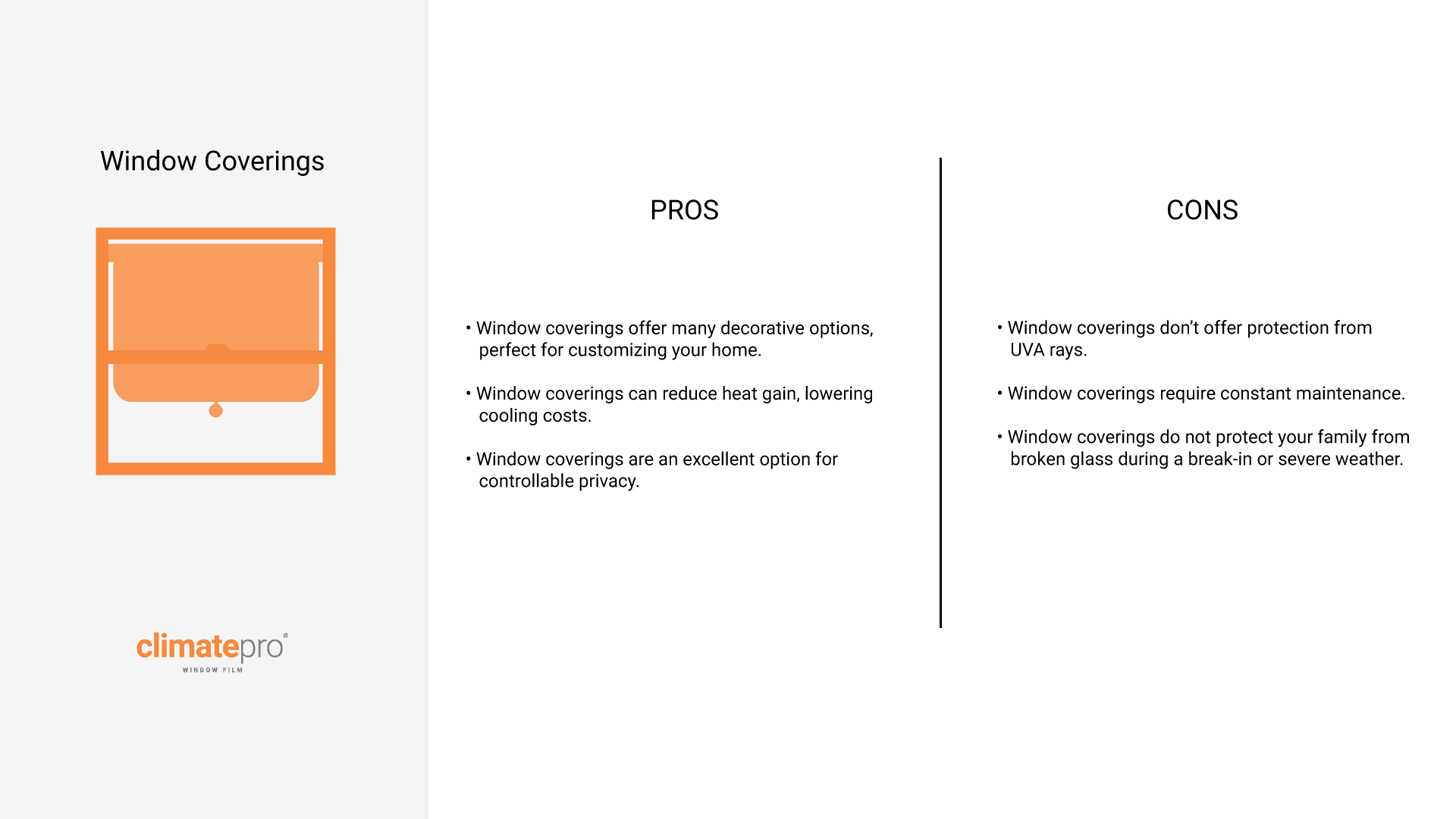
Window Film Pros and Cons
What about window film? What are the pros? There are many. First, window film offers protection from UVA rays. In fact, 3M window film blocks up to 99% of those harmful UVA rays. This means they can protect your family and furnishings from skin cancer and fading.
Second, window film can offer you a layer of safety that window treatments doesn’t. During an earthquake, severe weather event, or break-in, broken or shattered glass is held in place by window film. Some window film is so strong, it even prevents break-ins!
Window film also helps lower your heating and cooling costs by rejecting up to 60% of the solar heat, without obscuring your view to the outside world. But the benefits don’t end in the spring and summer. Some window films, like 3M Thinsulate, can reduce heating costs too by improving window insulation, keep the warm air inside where you want it. When it comes to maintenance, window film has the advantage. Professionally installed window film is virtually maintenance-free and can be removed without damaging the glass.
What are the disadvantages of window film? First, even though there are some excellent decorative window films available, window films can’t touch window treatments in this category. Also, for total privacy without obscuring your view, window film offers an “either-or” solution. You either get complete privacy, say with frosted window film, or none at all with most window film options. Some customers do put privacy film in bathrooms, perhaps on the lower part of the window as an acceptable compromise.
To sum it up, window film offers protection from UVA rays without obscuring your view. It can keep your family safe from broken glass and forced entry and reduce your heating and cooling costs. As you can see, both window coverings and window film have some pros and cons. But what if you could have the best of both?
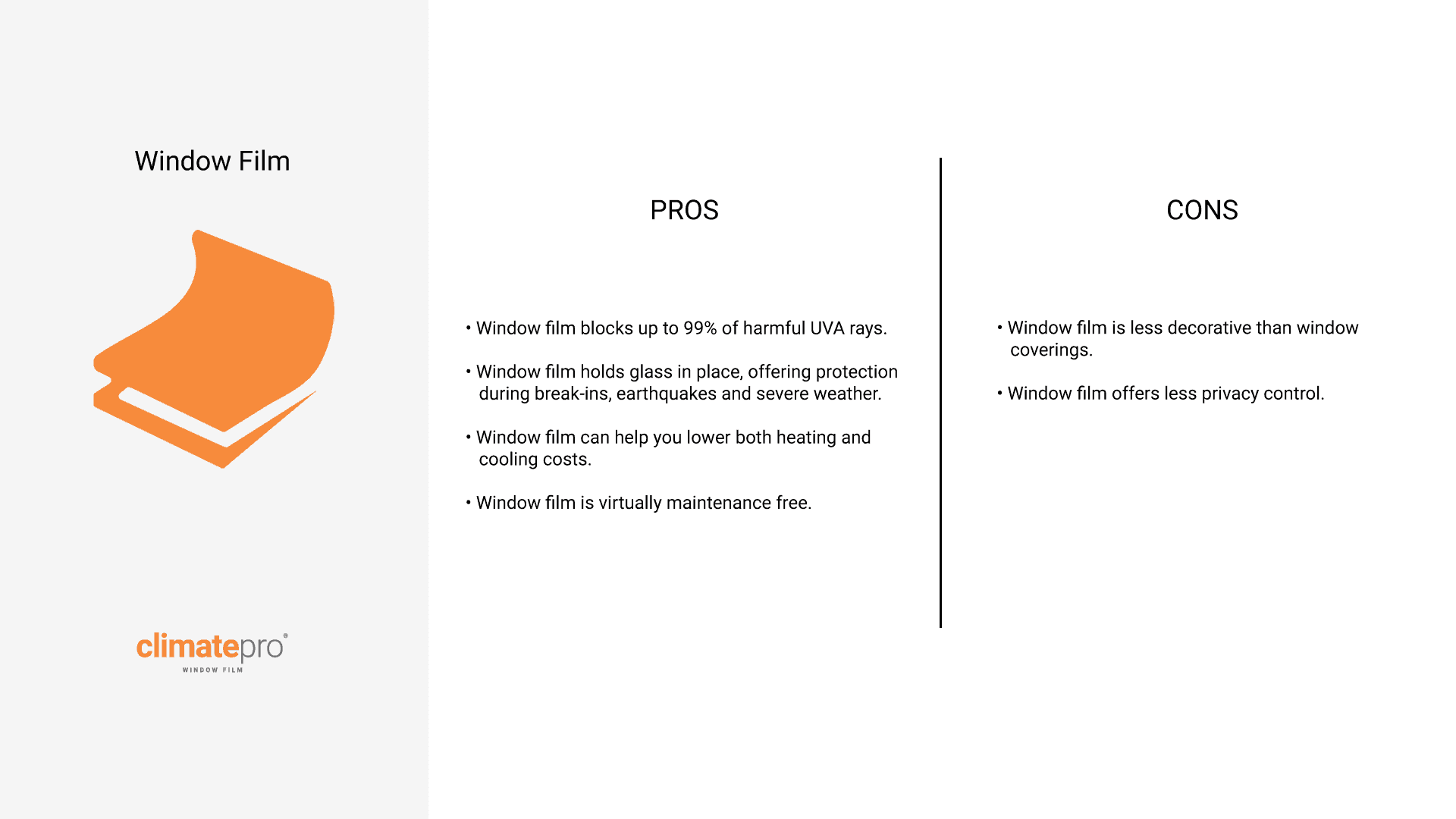
Window Film and Window Coverings Work Well Together
Instead of having to choose between window film and window coverings, why not choose both! With window coverings, you can get the privacy control you want, with the decorative elements you desire. By adding window film to the equation, you also can have UVA protection and the security of knowing that you are safe from broken glass. Since both window coverings and window film offer heating and cooling benefits, having them both can be a win-win for energy conservation.
With window coverings, there are a ton of options out there, from blinds to curtains. While we are not experts (yet!) on window coverings, we do know a thing or two about window film. ClimatePro has been the leading window film installation experts in the San Francisco Bay Area for over 40 years. If you’re interested in the benefits of window film for your home or business, but are still concerned about thermal breakage, contact us today for a free consultation. With offices in North Bay, San Francisco, and San Jose, we can be reached at (707) 569-9098.

